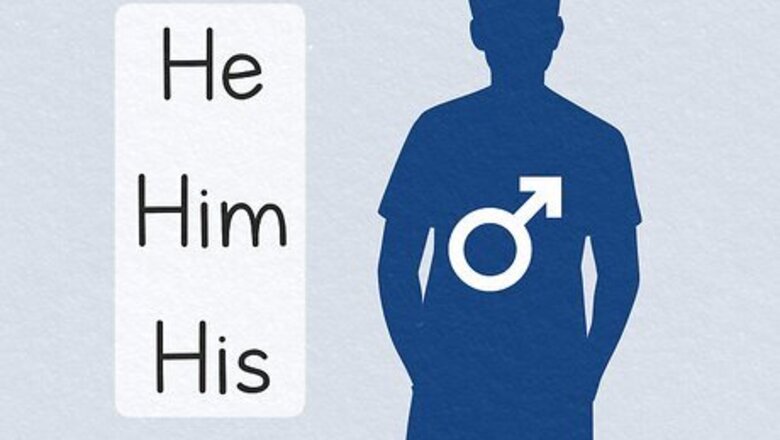
views
- “He/him/his” on a nametag, email signature, or any other context means that that person prefers to use masculine pronouns.
- Everyone uses pronouns, but many people prefer to use pronouns that are different from the ones people might assume they use.
- Ask for someone’s pronouns just by saying, “Which pronouns do you prefer?” then share your own. It’s no big deal!
What does “he/him” mean?
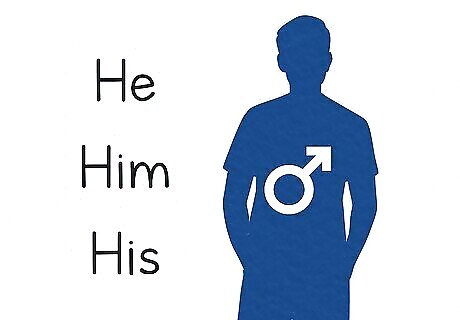
“He/him/his” means that someone identifies with male pronouns. Pronouns are words used in place of a noun to reference someone or something without using their name. Someone with he/him/his pronouns in his email signature, social media bio, or elsewhere is making it clear that he currently identifies and uses masculine pronouns to refer to himself. Other pronouns include: She/her/hers: This person prefers to use female pronouns. They/them/theirs: This person identifies as non-binary or gender-nonconforming. These pronouns are also often used when you’re unsure of someone’s preferred pronouns. She/they, or he/they, or she/him, etc: This person is specifying that a certain combination of pronouns is acceptable.
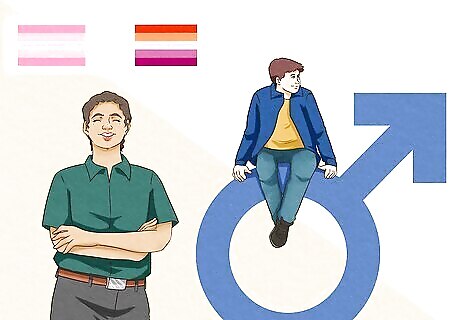
Anyone who identifies as male can use he/him pronouns. Whether someone was born male and still thinks of himself as male, transitioned to a male identity, or even just wants to be referred to in the masculine sense (while identifying with a different gender), they can use he/him pronouns to do so. Language is a toolbox, not a constraint! Pronouns are just another tool in the box that we can use to express ourselves.

Pronouns indicate gender expression, not sexuality. “Sexuality” or “sexual orientation” refers to the gender(s) a person is attracted to. When someone uses or specifies their pronouns, it doesn’t mean they’re straight, gay, bisexual, or any other sexuality. It only means that they want their own gender to be acknowledged a certain way. Specifying pronouns also doesn’t necessarily mean someone is trans, non-binary, or intersex. Cisgendered people (those who identify with the gender they were assigned at birth) often specify their own pronouns, too.
Why do people share their pronouns?

To clarify the language they’re comfortable with. Imagine if someone used the wrong pronouns when talking about you. It might make you uncomfortable, frustrated, or bewildered, right? The same goes for people who aren’t comfortable with the pronouns that might seem “obvious” to others. Sharing their pronouns lets others know what they like to be called. For many, using the right language is a health issue. Studies show that using one’s preferred name and pronouns reduces the risk of depression and suicide.

To make things more inclusive for others. When cisgendered people (people who identify with the gender they were assigned at birth) share their pronouns—even though it might seem obvious—they help to set a precedent that encourages non-cisgendered people to share what they’d like to be referred to, as well, and if they so choose. That said, there are many reasons why someone might not wish to share their pronouns, like if they’re questioning their gender, aren’t public with their own gender expression, or fear harassment for that expression.
How do you ask about someone’s pronouns?
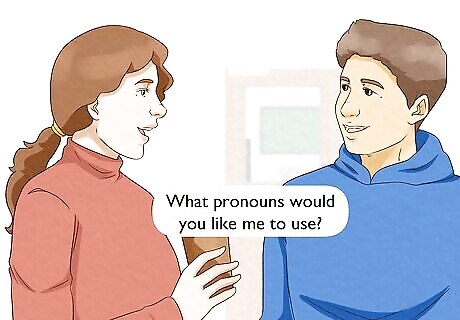
Ask for someone’s pronouns casually but respectfully. Finding out someone’s gender is as simple as saying, “What pronouns do you use?” or, “What pronouns would you like me to use?” It’s no big deal as a question, and neither is the answer. When in doubt, asking is better than assuming! Share your own pronouns after, to help others feel more comfortable.

Avoid assuming what pronouns other people use. While pronouns are often tied to someone’s gender identity, they still only indicate the language someone wants to use for themselves. It’s best to avoid assuming which pronouns someone uses whenever possible, even if their appearance or mannerisms might make it seem “obvious.” Avoid saying things like, “Sorry, I just can’t tell what pronouns you’d use,” or, “You seem like you’d use he/him pronouns,” both of which are assumptions or implicate an assumption.
What if you get someone’s pronouns wrong?
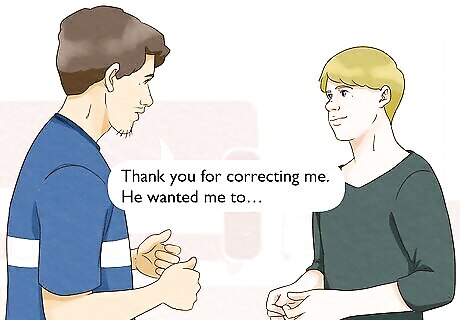
Apologize casually and briefly, or thank them for correcting you. Pronouns are only a big deal if you purposefully or repeatedly use the wrong ones, which is disrespectful. Usually, if you misgender someone by getting their pronouns wrong, all it takes is a simple, “Oh, sorry,” to move along with the conversation. For example: “So he was telling me—sorry, she was telling me…” If someone corrects you, thank them and keep the conversation going. Like: “She wanted me—” “Oh, I use he/him pronouns.” “Thank you for correcting me. He wanted me to…” Avoid emphasizing the corrected pronouns, which only draws attention to the discomfort of the mistake.
















Comments
0 comment